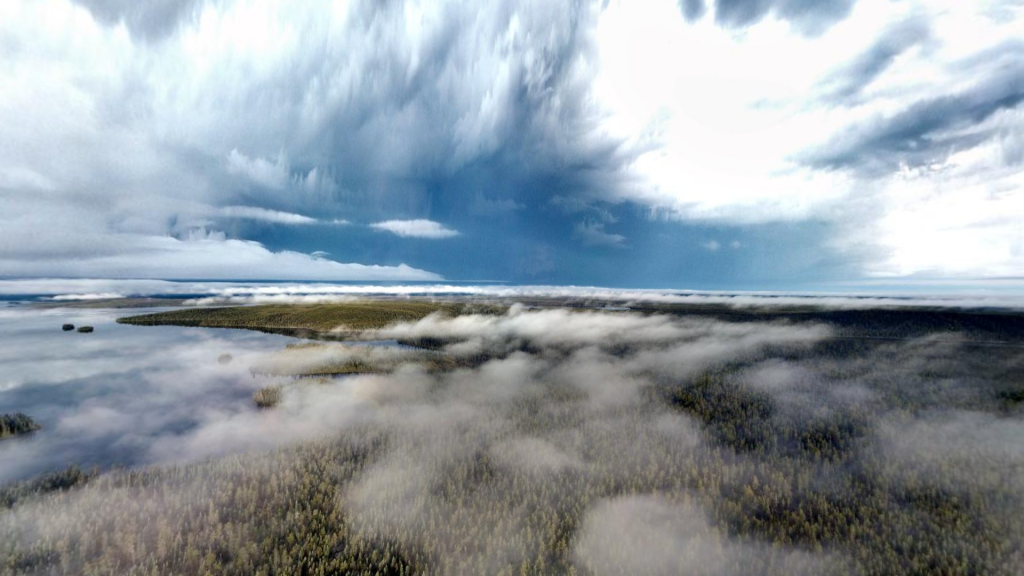Uranium claim staking heats up

With the price of uranium (U3O8) rising from US $24/lb in March to the current US $33.65/lb, two uranium exploration companies have significantly expanded their uranium prospects in the Athabasca basin of northern Saskatchewan, home to the world’s richest uranium mines.
IsoEnergy Ltd. [ISO-TSXV] has acquired over 46,000 hectares of new uranium exploration claims divided amongst four properties in the prolific Eastern Athabasca basin. The highlight is the 31,800-hectare Evergreen property located along the southeast rim of the Athabasca basin, just 16 km west of the Key Lake uranium mill. All of the new claims are 100% owned by IsoEnergy.
New Staking Summary
- Evergreen property: 31,800 ha located along the southeast rim of the basin
- Larocque East extension: 6,900 ha on the northwestern end of the property, home of the Hurricane Zone, the newest high-grade uranium discovery in the Athabasca basin
- Full Moon extension: 6,200 ha located between the original Full Moon property and the company’s Larocque East property
- Carlson Creek extension: 1,200 ha located just east of the original Carlson Creek property.
Steve Blower, vice-president of exploration, commented: “I’m very pleased with the results of our recent staking efforts, particularly with the acquisition of the Evergreen property. In Evergreen we acquired a contiguous package of over 31,000 ha along the basin margin close to the Key Lake mill. Several conductive zones are present that warrant exploration attention, especially given the presence of uranium-bearing boulders and a paucity of drilling on the property.”
With the addition of the newly staked claims, the company now has 15 properties in the Eastern Athabasca basin totalling 109,100 hectares. Historical work on all of the new claims, particularly airborne and ground geophysical surveys and core drilling, is being compiled and integrated with IsoEnergy’s existing datasets.
This work is expected to yield target areas for further exploration as time and budgets allow. As the company’s focus is currently the Hurricane Zone, there is no plan to conduct fieldwork on any of these newly staked claims in 2020.
CanAlaska Uranium Ltd. [CVV-TSXV; CVVUF-OTCQB; DH7N-FSE] has staked 29,671 hectares of land (114 square miles) in four large blocks in the Eastern Athabasca focusing on regional structures, similar to those hosting the nearby high-grade Collins Bay-Eagle Point uranium deposits. The new claim blocks which are currently secured for two years, cover defined targets along the interpreted location of the Collins Bay Fault and the Maguire Fault structures. The targets on these projects are basement-hosted, large uranium deposits like Eagle Point, Arrow and Millennium.
The project areas lie outside the current boundaries of the Athabasca Basin but in an area previously interpreted as covered by the extended basin. The sandstone remnants described in the Pinkham Lake area support this interpretation. Additionally, basement alteration systems typical of Athabasca unconformity deposits have been identified by drilling in Manitoba. The paleo-unconformity location is believed to be sufficiently close to present day surface to provide exploration potential for basement-type targets that have been proven to exist to depths of 900 metres below the unconformity (Eagle Point, Arrow).
The new project areas were staked within the Western Wollaston Domain, the host to a majority of the Athabasca-related uranium deposits.
Historical airborne geophysical surveys and preliminary geochemical sampling was key to selecting the new exploration areas. The earlier survey work has outlined linear conductive trends, newly interpreted cross-cutting and splay faults. The metasedimentary lithologies, in many cases, are coincident with, gravity anomalies, geochemical enrichments, and uranium-mineralized outcrops and boulders.
CanAlaska President, Peter Dasler, said:Â “Staff is currently modeling the extensive data sets that we assembled in advance of the staking program, which took place immediately following the recent claim openings. We were very impressed with the previous work carried out, but recognized that follow-up work was severely limited post-Fukushima. COO Cory Belyk’s personal work experience in the Collins Bay-Eagle Point area significantly refined our land selection.”
CanAlaska is advancing its key West McArthur uranium project in the Athabasca Basin, a joint venture with Cameco Corp. [CCO-TSX; CCJ-NYSE] and working on new initiatives for its nearby Cree East uranium project. CanAlaska has $1.56 million in its treasury.
The company currently holds interests in approximately 214,000 hectares (530,000 acres), in the Athabasca Basin and Wollaston area.
